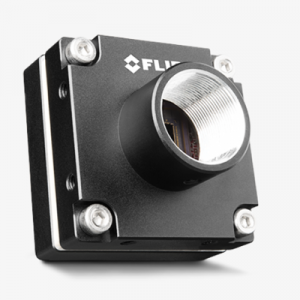The Future of Machine Vision in Industrial Automation – In the rapidly evolving industrial markets, machine vision cameras play a crucial role. It helps to ensure quality management, boosting reliability and promoting accuracy in various industries such as the manufacturing process. Every industry is constantly shifting its interests and choices toward machine visions giving us a clear indication that The Future of Machine Vision in Industrial Automation is bright and endless. Stay tuned to learn more!
Are you ready to explore the dynamic world of Industrial automation? We, at, Unseen Era, are here to introduce our prominent pillars – Machine Vision GigE Camera & USB Camera. Designed with cutting-edge and qualitative approaches, our technical solutions are all set to nail the current and future industrial market. Explore our collection of high-end machine vision cameras and take your business productivity and revenue to the next level. Later, we will discuss why our machine vision gigE camera and machine vision USB camera are the ultimate choices for your industrial processes.
The Future of Machine Vision in Industrial Automation – Market Demand & Analysis
As per the report published by Grandview Research, in the year 2023, the global machine market was recorded at USD more than 18 million and is projected to increase with a CAGR ( Compound Annual Growth Rate) of 12.7% during the forecast period 2024 to 2030. The booming demand for quality inspection and automation in various industrial sectors is the leading reason behind this constant growth.
How Machine Vision Works
Machine vision not only helps save man’s power on focus, measurement, and judgment but also enhances the productivity of industrial applications. It functions by converting the captured product into an image signal with the help of a machine vision system. After that, they transmit the signals to a reliable image processing system.
This image-processing system converts the image into a digital signal as per the brightness, color, pixels, and other details. There are multiple types of machine vision systems and their functions can vary from application to application.
2D vision systems
First, we have 2D vision systems. It is one of the most popular types of machine vision systems that is used in barcode reading, object tracking, and others.
3D vision systems
3D vision systems that can identify objects while inspecting intricate and rough surfaces, and have the ability to store detailed information.
Color Vision Systems
Color vision systems are mostly used in color-based applications and food processes because they can assess the colorful data in images.
Pattern recognition systems
Next, we have a pattern recognition system. It can help to identify, compare, and match patterns within the images for instance shape recognition, and others.
Motion Analysis Systems
As the name suggests, motion analysis systems help to inspect and track the movement of the objects within the process, which is extremely beneficial to robotics and automation applications.
The Future of Machine Vision in Industrial Automation is Here – Unseen Era
We, at, Unseen Era are widely famous for offering exceptional and smart technical solutions to various industries. With a strong domain of knowledge and fantastic experience in this sphere, we aim to simplify every industrial process with our machine vision gigE and machine vision USB camera.

Technical solutions are our business, but your satisfaction is our priority. We always listen to our client’s requirements and offer them exactly solutions tailored to their needs. Our commitment to innovative approaches and your trust take us overseas. We take pride in announcing that our technical products are trusted by various international clients.

Our high-quality solutions are exported to several countries including India, Nepal, Bangladesh, Bhutan, Pakistan, Maldives, UAE, Saudi, Qatar, Egypt, Kuwait, and Oman, establishing remarkable footprints in the global industrial market.
Stand-out features of our Machine Vision GigE & USB camera
- Appropriate & Practical size
- Available in various versions
- Enhanced manual control & auto-algorithms.
- Easily connected with the third-party system
- Less code writing required
- Offers fast and accurate outcomes
- Sturdy design for long-term durability
- Can easily accompanied by a handheld system
- Optimize productivity
- Cost-effective prices
Contact details
If you are curious to know more about our Machine Vision GigE & USB Vision Cameras, feel free to reach out to us. Our friendly and talented customer support crew will be there to assist you
Drop Your Queries: info@unseenera.com
Talk to us: +91-7206-86-5596, +971-52-2697872
People May Also Ask about the Future of Machine Vision in Industrial Automation
Q1: What are the main benefits of using machine vision in industrial automation?
Ans: Machine vision in industrial automation offers various benefits in industrial automation including enhanced quality, improved credibility, and boosted accuracy in various applications. It plays a major role in saving labor power and increasing productivity by automating focus and measurement tasks.
Q2: What is the future scope for machine vision in industrial automation?
Ans: According to a report by Grandview Research, the global machine vision market was recorded at over USD 18 million in 2023 and is projected to increase with a Compound Annual Growth Rate (CAGR) of 12.7% during the forecast period from 2024 to 2030.
Q3: What is the price range of machine vision cameras?
Ans: The average price of machine vision cameras can range between $300 – $600.
Q4: How does machine vision work in industrial automation?
Ans: Machine vision works by capturing the product as an image signal using a machine vision system and then transmitting the signal to an image processing system. The image is converted into a digital signal based on brightness, color, and other details.
Q5: What are the various types of machine vision systems?
Ans; Different types of machine vision systems are used for specific applications such as 2D vision, 3D vision, color vision, pattern recognition, and motion analysis.










 Call
Call Whatsapp
Whatsapp Contact Us
Contact Us